#dolan image
Explore tagged Tumblr posts
Text

Annie Dolan, 2024
0 notes
Text
𝐀𝐒𝐓𝐑𝐎𝐋𝐎𝐆𝐘 𝐎𝐁𝐒𝐄𝐑𝐕𝐀𝐓𝐈𝐎𝐍𝐒 𝐁𝐘 𝐀𝐒𝐓𝐑𝐎𝐒𝐊𝐘 𝐏𝐀𝐑𝐓 𝟏𝟒



🛸 People with Mars in the 3rd/11th house often get most inspired by tiktok, youtube, or other social media videos. When they see others being productive online it makes them want to be productive
🛸 Having your Moon in the 1st house can mean your face says things before you do
🛸 Libra placements have sensitive skin typically since Libra rules over the skin
🛸 Your 8th house can be indicative of how you die but not how horrible it will be necessarily like a lot of astro posts say. Ex: Mars in 8H can actually indicate dying a quick death since Mars rules over speed
🛸 A lot of celebrities are witches but just stay private about it which is why so many of them have 22 degrees in their chart because it’s the degree of witchcraft
🛸 Unpopular opinion: I don’t think Jupiter in the 7th house is a great placement for love most of the time. Many of the people I’ve seen with this placement have multiple marriages. This is because Jupiter rules over abundance and the 7H rules over marriages/relationships. Yes it rules over luck too but I rarely see that specific trait taken on for people with this placement - ex: marilyn monroe
🛸 Everyone always says if you lack water in your chart you’re tough but I personally don’t agree with that because I am 13% water and am very sensitive emotionally
🛸 Having your 4th house ruler in the 8th house can indicate your childhood may’ve been filled with trauma
🛸 Jupiter in the 3rd house in Composite Charts of siblings indicates you’re each other’s favorite siblings
🛸 People always think Mars in the 1st house in Composite Chart is a bad thing but in my readings I’ve found it indicates very passionate romance when in a couples chart
🛸 Chiron in the 1st house in Composite Charts can indicate one of you constantly making the other feel poorly about their appearance; ex: emma chamberlain & ethan dolan- emma said on a podcast that he constantly tore her down for not presenting herself in a more feminine way
🛸 Chiron in the 7th house in Composite Charts usually ends in heartbreak when it comes to romantic relationships
🛸 Juno conjunct/trine/sextile Jupiter indicates marriage occurring in Composite Charts. This is because in Greek Mythology Juno married Jupiter
🛸 Asteroid Charis in the 10th house can indicate having a magnetic and charismatic public image that attracts many people to you - asteroid code: 627
🛸 Asteroid Neverland can shows areas where we’re out of touch with reality. It can also show things we may have enjoyed doing as a child - asteroid code: 5405
🛸 Marilyn Monroe has Asteroid Fama in Libra and she was famous for her beauty. Libra is ruled by Venus the planet of beauty. Fama shows what we can gain fame for - code: 408

𝗠𝗢𝗥𝗘 𝗔𝗦𝗧𝗥𝗢 𝗢𝗕𝗦𝗘𝗥𝗩𝗔𝗧𝗜𝗢𝗡𝗦
𝗠𝗔𝗦𝗧𝗘𝗥𝗟𝗜𝗦𝗧
𝗦𝗨𝗕 𝗧𝗢 𝗠𝗬 𝗣𝗔𝗧𝗥𝗘𝗢𝗡
𝗔𝗟𝗟 𝗧𝗨𝗧𝗢𝗥𝗜𝗔𝗟𝗦

© 𝐚𝐬𝐭𝐫𝐨𝐬𝐤𝐲 𝟐𝟎𝟐𝟑 𝐚𝐥𝐥 𝐫𝐢𝐠𝐡𝐭𝐬 𝐫𝐞𝐬𝐞𝐫𝐯𝐞𝐝
#astro community#astrology#zodiac#astro placements#astrology tumblr#astro chart#birth chart#asteroid astrology#mars#mars astrology#fame asteroids#asteroid#asteroids#asteroids astrology#composite chart observations#composite chart#composite#composite charts
1K notes
·
View notes
Text
Also preserved on our archive
by Eric W. Dolan
A new study published in Scientific Reports sheds light on long-term neurological consequences of COVID-19. Researchers found that individuals who had anosmia (the loss of smell) during COVID-19 showed alterations in brain functionality and even physical structure during recovery. This study is among the first to link COVID-19-related loss of smell to significant brain changes.
COVID-19, caused by the SARS-CoV-2 virus, has been primarily known for its impact on the respiratory system. However, over time, many patients, even those with mild cases, reported cognitive issues such as memory problems, confusion, and difficulties with concentration, which raised concerns about the virus’s effects on the brain. Neurological symptoms like headaches, brain fog, and loss of smell emerged as common issues for COVID-19 survivors.
Anosmia, the loss of smell, became one of the earliest and most recognizable symptoms of COVID-19, often occurring suddenly. While most patients recovered their sense of smell after a few weeks, some experienced longer-lasting olfactory dysfunctions. Previous research also suggested that loss of smell could signal broader neurological involvement in diseases like Alzheimer’s and Parkinson’s. Given the commonality of anosmia in COVID-19 and its potential implications for brain health, the researchers sought to explore whether loss of smell during COVID-19 was associated with any measurable brain changes in recovering patients.
“Our laboratory studies the neurobiological mechanisms underlying complex social behavior and decision-making. During the pandemic, it was very challenging to halt our experimental activities due to health restrictions,” said study author Pablo Billeke of the Center for Research in Social Complexity at the University for Development in Chile.
“In this context and given the early reports of neurological symptoms in patients affected by COVID-19, we wanted to contribute from our unique perspective to understanding the potential damage caused by SARS-CoV-2 infection in the central nervous system. This led us to initiate this study, in which we evaluated recovered COVID-19 patients using structural and functional magnetic resonance imaging while they performed decision-making and cognitive control tasks, as well as tracking their evolution with electroencephalography.”
To investigate these possible brain changes, the research team recruited 100 adults in Santiago, Chile, who had recovered from respiratory infections between February 2020 and May 2023. The final sample included 73 participants who had confirmed cases of COVID-19 (the remaining participants had respiratory infections caused by other agents, as confirmed by multiple negative PCR tests). The team used a combination of tests and brain scans across two sessions to assess these participants’ brain function and structure.
The participants ranged in age from 19 to 65, and none had severe cases of COVID-19 that required ventilators or intensive care. The study specifically excluded anyone with neuropsychiatric disorders or severe brain injuries, ensuring that the observed effects could be linked to their infection rather than prior conditions.
In behavioral tests, participants with a history of anosmia displayed more impulsive decision-making compared to those who did not lose their sense of smell. These individuals tended to change their choices more rapidly after receiving negative feedback, particularly in tasks requiring them to learn and adapt to changing probabilities of rewards. While this impulsivity led to higher earnings in decision-making tasks that involved rapidly shifting conditions, it also highlighted an alteration in how their brains processed rewards and risks.
Functionally, patients with a history of anosmia showed decreased brain activity during decision-making tasks in regions associated with evaluating choices, including the lateral prefrontal cortex and temporoparietal regions.
On the structural side, brain scans showed thinning in specific regions of the brain in participants with a history of anosmia. Most notably, these changes were observed in the parietal areas of the brain, which are responsible for processing sensory information and managing spatial awareness. The thinning in these areas could indicate long-term structural changes in the brain caused by the virus in individuals who experienced loss of smell.
Additionally, these participants exhibited decreased white matter integrity, particularly in white matter tracts that connect important brain regions. White matter plays a crucial role in facilitating communication between different parts of the brain, and disruptions in these connections could lead to a range of cognitive impairments.
“In the current context, where we know that a significant percentage of the population has contracted COVID-19 at some point, it is crucial to identify the factors that may make certain individuals more susceptible to developing brain alterations after infection,” Billeke told PsyPost. “Our study found that individuals who lost their sense of smell during the acute infection exhibited detectable changes in brain structure and showed a particular pattern in decision-making tasks involving learning.”
“Specifically, they made more impulsive decisions when the environmental context changed. While this may not necessarily have long-term consequences, it could serve as an early marker to monitor individuals who experienced loss of smell, helping to determine whether they are more susceptible to developing neurodegenerative alterations. This is particularly relevant when other risk factors, such as cardiovascular diseases, diabetes, and genetic predisposition, are present, all of which are linked to the development of neurodegenerative diseases.”
Interestingly, these brain changes were less pronounced in patients with more severe respiratory symptoms, such as those requiring hospitalization, suggesting that anosmia might be a more reliable indicator of neurological involvement than respiratory symptom severity.
“What surprised us the most was how consistent the findings were in patients with anosmia compared to other patients, regardless of the severity of their respiratory symptoms,” Billeke said. “These individuals exhibited detectable alterations at the behavioral level and in brain function and structure, affecting white matter and gray matter.”
While the study provides valuable insights, it has limitations. First, it relied on self-reported symptoms of anosmia and used the KOR test, a validated screening tool for olfactory deficits associated with COVID-19, to confirm the presence of olfactory dysfunction. More objective and comprehensive clinical assessments would provide stronger evidence.
Additionally, the study lacked baseline brain scans from before the participants contracted COVID-19. This makes “it difficult to establish a direct causal relationship between the infection and our findings,” Billeke explained. “However, when considered alongside the current body of evidence from other studies that have used databases or tracked individuals for different reasons, we can determine that the virus does indeed cause alterations at the neural level.”
“Thus, the correlations we found can be viewed in existing literature as potential evidence of a causal link between the virus and the observed effects. However, the exact mechanism by which the virus produces this damage at the brain level is still under investigation.”
Looking ahead, the researchers plan to follow up with these participants over time to see if the observed brain changes persist or if they affect daily life. They also aim to explore potential therapies, such as brain stimulation techniques, to help those experiencing lingering cognitive and neurological effects after COVID-19.
“We aim to identify the oscillatory patterns related to these alterations, which is the focus of our ongoing electroencephalography (EEG) studies,” Billeke said. “The data are currently being analyzed. By identifying these altered oscillatory patterns, we hope to develop brain stimulation therapies that could help alleviate these symptoms, such as transcranial electrical or magnetic stimulation.”
“I would like to extend my gratitude to all the participants who voluntarily came to the study for all their sessions and to all the researchers who worked tirelessly, especially during the most challenging times of the pandemic lockdown,” Billeke added.
The study: “Patients recovering from COVID-19 who presented with anosmia during their acute episode have behavioral, functional, and structural brain alterations,” was authored by Leonie Kausel, Alejandra Figueroa-Vargas, Francisco Zamorano, Ximena Stecher, Mauricio Aspé-Sánchez, Patricio Carvajal-Paredes, Victor Márquez-Rodríguez, María Paz Martínez-Molina, Claudio Román, Patricio Soto-Fernández, Gabriela Valdebenito-Oyarzo, Carla Manterola, Reinaldo Uribe-San-Martín, Claudio Silva, Rodrigo Henríquez-Ch, Francisco Aboitiz, Rafael Polania, Pamela Guevara, Paula Muñoz-Venturelli, Patricia Soto-Icaza, and Pablo Billeke. www.nature.com/articles/s41598-024-69772-y
#mask up#covid#pandemic#covid 19#wear a mask#public health#coronavirus#sars cov 2#still coviding#wear a respirator#long covid#covid conscious#covid is not over
45 notes
·
View notes
Text
By: Eric W. Dolan
Published: Sept 20, 2024
A new study published in Proceedings of the National Academy of Sciences suggests that specific networks in the brain, when damaged, may influence the likelihood of developing religious fundamentalism. By analyzing patients with focal brain lesions, researchers found that damage to a particular network of brain regions—mainly in the right hemisphere—was associated with higher levels of fundamentalist beliefs. This finding provides new insight into the potential neural basis of religious fundamentalism, which has long been studied in psychology but less so in neuroscience.
Religious fundamentalism is a way of thinking and behaving characterized by a rigid adherence to religious doctrines that are seen as absolute and inerrant. It’s been linked to various cognitive traits such as authoritarianism, resistance to doubt, and a lower complexity of thought. While much of the research on religious fundamentalism has focused on social and environmental factors like family upbringing and cultural influence, there has been growing interest in the role of biology. Some studies have suggested that genetic factors or brain function may influence religiosity, but until now, very little research has looked at specific brain networks that could underlie fundamentalist thinking.
The researchers behind this study wanted to address a critical gap in understanding how brain lesions might affect religious beliefs, particularly fundamentalism. Prior research suggested that damage to the prefrontal cortex could increase fundamentalist attitudes, but this work was limited to small sample sizes and focused only on one part of the brain. The authors of the study hypothesized that instead of a single brain region being responsible, religious fundamentalism might arise from damage to a distributed network of connected brain regions.
“My primary interest is and has been mystical experience. But in the process researching the cognitive neuroscience of mystical experience, I came across brain network associations with religious fundamentalism,” study corresponding author Michael Ferguson, an instructor in neurology at Harvard Medical School and director of Neurospirituality Research at the Center for Brain Circuit Therapeutics.
To explore whether damage to specific brain networks could influence the likelihood of holding religious fundamentalist beliefs, the researchers used a method called lesion network mapping, which helps identify how different regions of the brain are connected and how damage to one area might disrupt related brain functions. The study involved two large groups of patients with focal brain damage, giving the researchers a unique opportunity to analyze how different types of brain lesions might be linked to religious beliefs.
The first group consisted of 106 male Vietnam War veterans who had sustained traumatic brain injuries during combat. These men, aged between 53 and 75 at the time of brain imaging, were part of a long-term study conducted at the National Institutes of Health. The second group included 84 patients from rural Iowa who had experienced brain injuries from various causes, such as strokes, surgical resections, or traumatic head injuries. This second group was more diverse in terms of gender and had a broader range of injury causes.
Both groups completed a scale designed to measure religious fundamentalism, which asked participants to respond to statements reflecting rigid and inerrant religious beliefs, such as the view that there is only one true religion or that certain religious teachings are absolutely correct and unchangeable.
For each participant, the researchers mapped the precise locations of their brain lesions using advanced imaging techniques like computerized tomography (CT) and magnetic resonance imaging (MRI). These scans were then analyzed using lesion network mapping to see how damage to certain brain areas was connected to changes in religious fundamentalism scores. The researchers also compared the brain lesion data to a larger database of lesions associated with various neuropsychiatric and behavioral conditions, which helped them understand how the brain regions linked to religious fundamentalism overlap with those involved in other psychological traits.
The researchers found that damage to certain areas of the brain, particularly in the right hemisphere, was associated with higher scores on the religious fundamentalism scale. Specifically, lesions affecting the right superior orbital frontal cortex, right middle frontal gyrus, right inferior parietal lobe, and the left cerebellum were linked to increased religious fundamentalism. In contrast, damage to regions such as the left paracentral lobule and the right cerebellum was associated with lower scores on the fundamentalism scale.
“The strength and reproducibility of the signal between psychological self-report measures of religious fundamentalism and the functional networks we identified in the brain surprised me,” Ferguson told PsyPost. “It increases confidence in the results.”
Interestingly, the researchers noted that the brain regions identified in this study are part of a broader network connected to cognitive functions like reasoning, belief formation, and moral decision-making. These areas are also associated with conditions like pathological confabulation—a disorder where individuals create false memories or beliefs without the intent to deceive. Confabulation is often linked to cognitive rigidity and difficulty in revising beliefs, characteristics that are also found in individuals with high levels of religious fundamentalism.
The researchers also found a spatial overlap between brain lesions associated with criminal behavior and this fundamentalism network, which aligns with previous research suggesting that extreme religious beliefs may be linked to hostility and aggression toward outgroups.
“It’s sobering, but one of the takeaway findings is the shared neuroanatomy between religious fundamentalism, confabulations, and criminal behavior,” Ferguson said. “It refocuses important questions about how and why these aspects of human behavior may be observed to relate to each other.”
The researchers emphasize that damage to this brain network does not guarantee that a person will develop fundamentalist beliefs, nor does it imply that individuals with strong religious convictions have brain damage. Instead, the findings point to the possibility that certain brain networks influence how people process beliefs and how flexible or rigid their thinking becomes, especially in the context of religion.
“A major caveat is that these results do not indicate that people with strong religious beliefs confabulate or that individuals high in religious fundamentalism commit crimes,” Ferguson explained. “Rather, our data may help us understand the style of cognitive or emotional processing that increase or decrease the probability of holding fundamentalism attitudes.”
The authors suggest that future research should explore how this brain network influences religious fundamentalism in more diverse populations, including people from non-Christian religious traditions or from different cultural backgrounds. It would also be valuable to study patients both before and after brain injuries to better understand how changes in the brain might affect religious beliefs over time. Additionally, research could investigate how this brain network relates to other types of belief systems, such as political ideologies or moral convictions, to see if similar patterns of cognitive rigidity or reduced skepticism emerge in these contexts.
“The personal beliefs of the authors span a broad continuum from adherents of religious faiths through agnosticism to atheism,” Ferguson noted. “We approach the weighty subject matter of this research as earnest seekers of scientific data and encourage readers to receive our results in the spirit of open-minded empirical inquiry driven by scientific curiosity and without prejudice or malice to any group or faith.”
The study, “A neural network for religious fundamentalism derived from patients with brain lesions,” was authored by Michael A. Ferguson, Erik W. Asp, Isaiah Kletenik , Daniel Tranel, Aaron D. Boes, Jenae M. Nelson, Frederic L. W. V. J. Schaper, Shan Siddiqi, Joseph I. Turner, J. Seth Anderson, Jared A. Nielsen, James R. Bateman, Jordan Grafman, and Michael D. Fox.
--
Significance
Religious fundamentalism is a global and enduring phenomenon. Measuring religious fundamentalism following focal brain damage may lend insight into its neural basis. We use lesion network mapping, a technique that uses connectivity data to identify functional brain networks, to analyze two large, independent datasets of brain lesion patients. We found a network of brain regions that, when damaged, are linked to higher religious fundamentalism. This functional network was lateralized to the right hemisphere and overlaps with the locations of brain lesions associated with specific neuropsychiatric and behavioral conditions. Our findings shed light on neuroanatomy that may influence the emergence of religious fundamentalism, offering implications for understanding the relationship between brain networks and fundamentalist behavior.
Abstract
Religious fundamentalism, characterized by rigid adherence to a set of beliefs putatively revealing inerrant truths, is ubiquitous across cultures and has a global impact on society. Understanding the psychological and neurobiological processes producing religious fundamentalism may inform a variety of scientific, sociological, and cultural questions. Research indicates that brain damage can alter religious fundamentalism. However, the precise brain regions involved with these changes remain unknown. Here, we analyzed brain lesions associated with varying levels of religious fundamentalism in two large datasets from independent laboratories. Lesions associated with greater fundamentalism were connected to a specific brain network with nodes in the right orbitofrontal, dorsolateral prefrontal, and inferior parietal lobe. This fundamentalism network was strongly right hemisphere lateralized and highly reproducible across the independent datasets (r = 0.82) with cross-validations between datasets. To explore the relationship of this network to lesions previously studied by our group, we tested for similarities to twenty-one lesion-associated conditions. Lesions associated with confabulation and criminal behavior showed a similar connectivity pattern as lesions associated with greater fundamentalism. Moreover, lesions associated with poststroke pain showed a similar connectivity pattern as lesions associated with lower fundamentalism. These findings are consistent with the current understanding of hemispheric specializations for reasoning and lend insight into previously observed epidemiological associations with fundamentalism, such as cognitive rigidity and outgroup hostility.
==
Two of the authors of the above paper also published the following:
Abstract
Background
Over 80% of the global population consider themselves religious, with even more identifying as spiritual, but the neural substrates of spirituality and religiosity remain unresolved.
Methods
In two independent brain lesion datasets (N1 = 88; N2 = 105), we applied lesion network mapping to test whether lesion locations associated with spiritual and religious belief map to a specific human brain circuit.
Results
We found that brain lesions associated with self-reported spirituality map to a brain circuit centered on the periaqueductal gray. Intersection of lesion locations with this same circuit aligned with self-reported religiosity in an independent dataset and previous reports of lesions associated with hyper-religiosity. Lesion locations causing delusions and alien limb syndrome also intersected this circuit.
Conclusions
These findings suggest that spirituality and religiosity map to a common brain circuit centered on the periaqueductal gray, a brainstem region previously implicated in fear conditioning, pain modulation, and altruistic behavior.
--
For reference, I previously posted about a similar study from 2017:
Abstract
Beliefs profoundly affect people's lives, but their cognitive and neural pathways are poorly understood. Although previous research has identified the ventromedial prefrontal cortex (vmPFC) as critical to representing religious beliefs, the means by which vmPFC enables religious belief is uncertain. We hypothesized that the vmPFC represents diverse religious beliefs and that a vmPFC lesion would be associated with religious fundamentalism, or the narrowing of religious beliefs. To test this prediction, we assessed religious adherence with a widely-used religious fundamentalism scale in a large sample of 119 patients with penetrating traumatic brain injury (pTBI). If the vmPFC is crucial to modulating diverse personal religious beliefs, we predicted that pTBI patients with lesions to the vmPFC would exhibit greater fundamentalism, and that this would be modulated by cognitive flexibility and trait openness. Instead, we found that participants with dorsolateral prefrontal cortex (dlPFC) lesions have fundamentalist beliefs similar to patients with vmPFC lesions and that the effect of a dlPFC lesion on fundamentalism was significantly mediated by decreased cognitive flexibility and openness. These findings indicate that cognitive flexibility and openness are necessary for flexible and adaptive religious commitment, and that such diversity of religious thought is dependent on dlPFC functionality.
--
It should be noted that fundamentalism is not exclusive to (traditional) religions.
“… fundamentalism, properly understood, is not about religion. It is about the inability to seriously entertain the possibility that one might be wrong. In individuals such fundamentalism is natural and, within reason, desirable. But when it becomes the foundation for an intellectual system, it is inherently a threat to freedom of thought.” -- Jonathan Rauch, “Kindly Inquisitors: The New Attacks on Free Thought”
Flat Earth, anti-vax and wokery (modern feminism, "anti-racism," "gender identity" ideology, fat activism, etc) are all fundamentalist in nature. There is no evidence you can present to disabuse them of the tenets of their faith.
This phenomenon creates a problem for society in dealing with fundamentalist and false beliefs, especially when they have attained cultural dominance and institutional power. And particularly when they're held to be inerrant and absolute, and those who hold them regard dissent as heresy, and those who follow available evidence as evil heretics.
A good test for this is to look at the reaction when the belief is questioned; is the questioner regarded as factually wrong or morally suspect?
#fundamentalism#religious fundamentalism#false beliefs#inerrancy#unfalsifiable#religion#religion is a mental illness
29 notes
·
View notes
Text

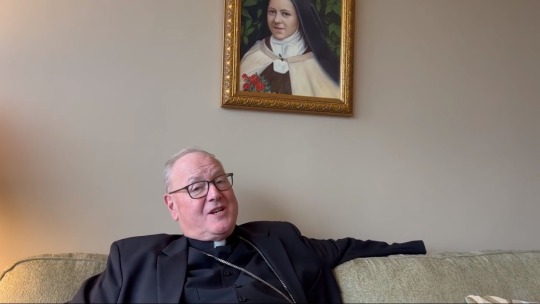
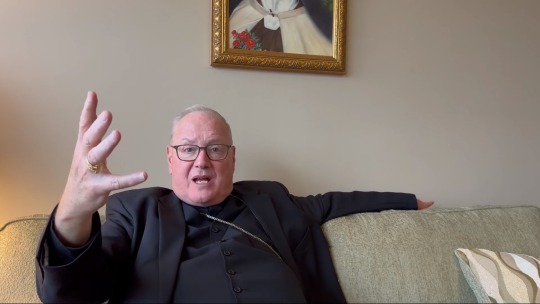
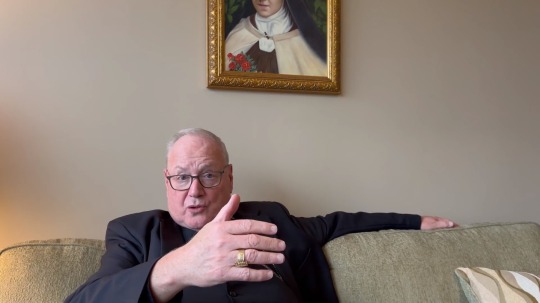
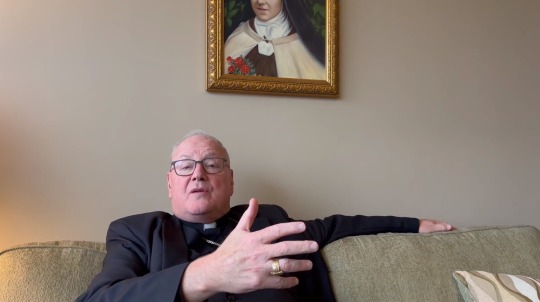


Timothy M. Dolan Archbishop of New York
The things I image doing to Cardinal Dolan on that couch... with our penis'.
On A Side Note: I like to image this is what Cardinal Dolan's oh face might look like.
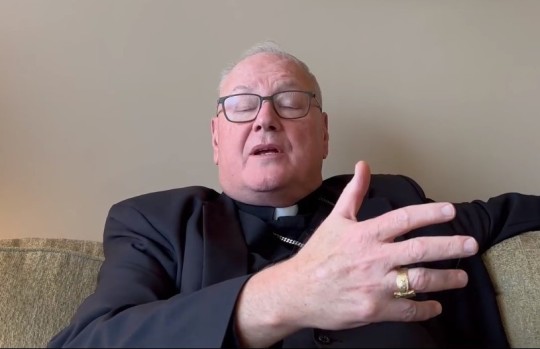
#timothy dolan#timothy m. dolan#priest#husky daddy#cilf#handsome daddy#cardinal#archbishop#celebrities#religious figures#eye glasses#clergy#hands
107 notes
·
View notes
Text

John Allen Amos Jr. (December 27, 1939 – August 21, 2024) Television and film actor. He was best known for his role as the adult Kunta Kinte in the landmark miniseries Roots and for portraying James Evans Sr. on the CBS television series Good Times. Amos' other television work includes The Mary Tyler Moore Show, a recurring role as Admiral Percy Fitzwallace on The West Wing, and the role of Washington, DC Mayor Ethan Baker in the series The District. Amos has appeared on Broadway and in numerous films in his five-decade career.
Amos was nominated for a Primetime Emmy Award and an NAACP Image Award.
Amos became well known in his first major TV role, playing Gordy Howard, the weatherman on The Mary Tyler Moore Show, from 1970 until 1973. Upon the death of Betty White, Amos and Joyce Bulifant (who played Marie Slaughter) became the last surviving semi-regular cast members of that show (not counting child actors). In 1971, he appeared with Anson Williams in a commercial for McDonald's.
In 1980, he starred in the television film Alcatraz: The Whole Shocking Story. Amos played an Archie Bunker-style character in the 1994 sitcom 704 Hauser, a modern spin-off of All in the Family, but it was canceled after only five episodes (in the series he played a different character than he did in the All in the Family spin-off Maude). He also portrayed Captain Dolan on the TV show Hunter from 1984 to 1985. He co-starred in the CBS police drama The District. Amos was a frequent guest on The West Wing, portraying Admiral Percy Fitzwallace, who serves as Chairman of the Joint Chiefs of Staff for most of the show. He played Buzz Washington in the ABC series Men in Trees. Amos co-starred with Anthony Anderson in the short-lived TV series All About the Andersons in 2003.
In 2010, Amos also appeared as recurring character Ed on Two and a Half Men, and in 2016 as another recurring character, also (coincidentally) named Ed, on the Netflix sitcom The Ranch. He has guest-starred in a number of other television shows, including Police Story, The A-Team, The Cosby Show, The Fresh Prince of Bel-Air, In the House, Martin as Sgt. Hamilton Strawn (Tommy's father), Touched by an Angel, Psych, Sanford and Son, My Name Is Earl, Lie to Me, and Murder, She Wrote. (Wikipedia)
IMDb Listing
#John Amos#TV#Obit#Obituary#O2024#The Mary Tyler Moore Show#Good Times#Roots#The West Wing#The Distict#704 Hauser#Hunter
12 notes
·
View notes
Text
The Metahistory of Paz
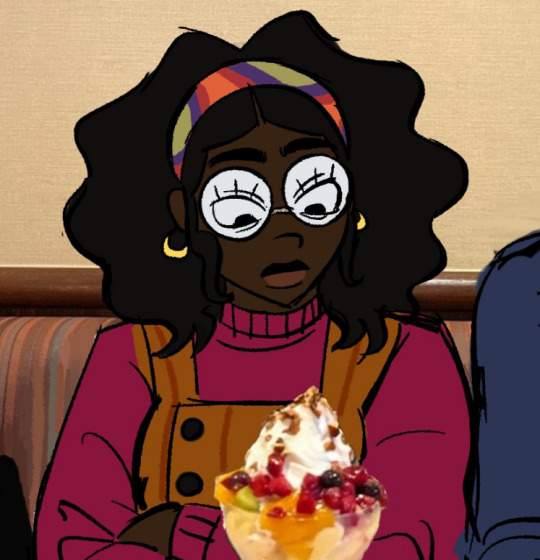
A user on instagram requested I talk about how Paz/Rumi were before modern tbod development, and since I actually made Paz around the time I made Derek (Dolan, at the time) in early 2019, there is enough content for a long post, so I want to tackle that first. Rumi was created in 2021, so she hasn't gone through as much change outside of personality.
Note that for the sake of saving space on this post (only 30 images allowed), I won't be including much of what is already public on derekdemetripoo or something.
Let's gooooooooooooo!
Note: around September/October 2019, my hard drive where I keep all of my art got corrupted so I had to get it fixed and they managed to recover a lot of my files but not all of them, because of this all the metadata (e.g date of creation) of the files was lost. All dates before 5th October 2019 are approximations based on what date it was saved on my phone/what date I posted it on toyhouse, etc.
Notex2: Also, when I mention Derek's old self, I will refer to him with his name at the time, Dolan, and also Paz by her old names.
CREATION: approx. ~26th January 2019

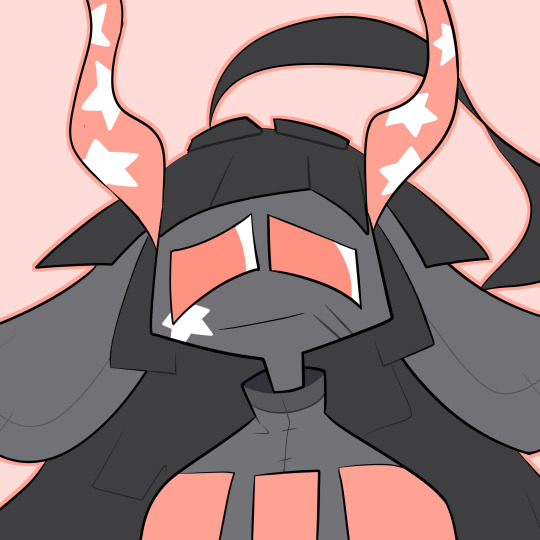
Figure 1. Paz's first design and appearance (Heller) | Figure 2. Heller's icon on toyhouse (~4/2019)
Around this time I started making demon ocs, one of which was Paz, or at the time she was Dolan's (Derek) half-brother, Heller Luq Urhis. No cultural inspirations for that name, I literally made up words. Heller was based off my friend's backpack (Figure 1). Dolan's full name was Dolan Sol Urhis. I think they both had a thing for Cerise (if you remember seeing me draw a pirate lady, she was from this era as well but less piratey). Not much I can say about Heller's personality because I don't remember and I never wrote things down. I think he was pretty serious to contrast w Dolan. This post is only about Paz so I won't go deep into other characters.
Something I remember about Heller is that, at some point he wasn't born a demon but was actually turned into one after he died, and that his starry poncho was handcrafted by him so he could remember what stars looked like (there are no stars in Hell). This contradicts the idea of him and Dolan being half-brothers, so I think this was canon before I made them brothers.
Fun fact: at this time, both this story - Devil's Adequate, though I named it in March 2020 - and Wence happened in the same world. I think. I know that Harlow had a connection to Luciano's brother.
DEVIL'S ADEQUATE V2: September 2020


Figure 3. Heller redesign portrait | Figure 4. Heller redesign reference, both from 7th November 2020
This was when I decided to make Devil's Adequate a more "serious" (it was corny) story about morality and heaven and hell, as you can see Heller has a bit of a priest/nun look. At this point he wasn't Dolan's brother anymore but an unrelated character. I think he was a fallen angel who was in denial about being Bad, so he kept up the priest thing in Hell. Quite an interesting concept, given the rest of the story was your average Maybe The Hell And Heaven System Is Flawed (sound familiar? lmao I was 15 by the way. This is a concept a 15 year old comes up with. cough)
I had quite a bit of worldbuilding for Devil's Adequate, like names for places and races of demons/angels. The comprehensive text on the worldbuilding is lost because it was a description for the toyhouse folder I later deleted. All I have left to work from is Dolan's toyhouse profile and maybe the draft script of Devil's Adequate however short. For example, Heaven was called Ecstasis instead.
According to Dolan's toyhouse profile,
'During [Dolan's] years as a secretary he met one of the Fallen Angeli, Heller - they became close friends, very close that Heller was enticed by him and developed feelings, of which are unrequited.'
Interesting! So now he was a love interest. This love interest thing would continue into early TBOD. I would get into the whole Devil's Adequate lore but I think that's more suited to an essay about Dolan/Derek's metahistory because he Was the protagonist.
NOT QUITE DEVIL'S ADEQUATE, NOT QUITE THE BOOK OF DEREK: July 2021
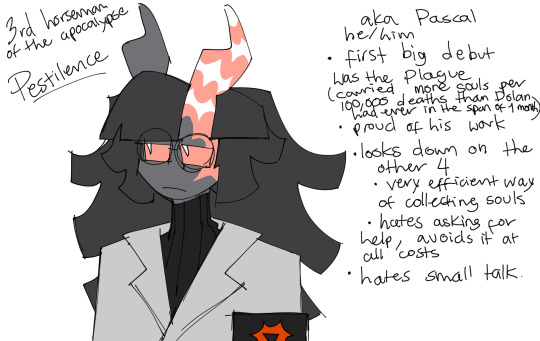
Figure 5. Pascal's new biography (23rd July 2021)
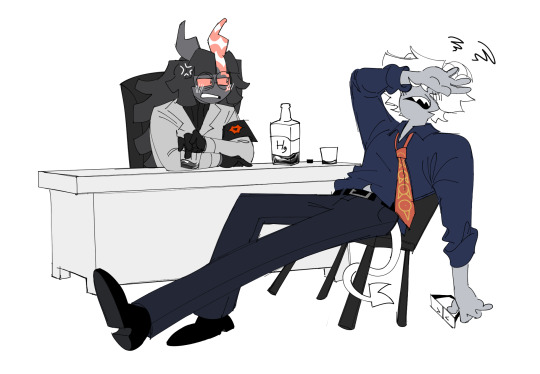
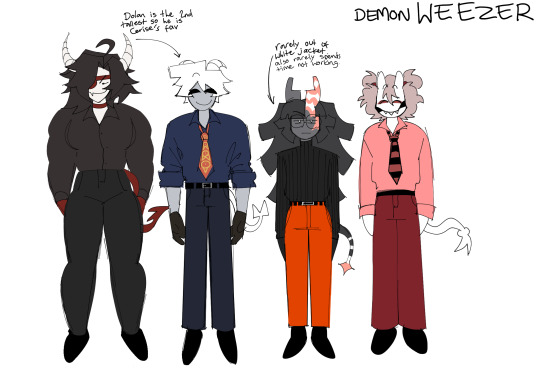
Figure 6. Pascal and Death (4th August 2021) | Figure 7. The 4 Horsemen of the Apocalypse (6th August 2021)
At this time, Dolan was no longer Dolan, he was now Death. This story didn't really take place in Heaven or Hell but in some kind of Purgatory office where Death and the other 3 horsemen had to collect souls of people who died like reapers. Each horseman would have their "department" and would collect souls of people depending on how they died. For example, Pascal (no longer Heller), being the horseman of Pestilence, collected souls of people who died by disease. I named him (yes, still a man) Pascal because it was close to Pestilence and I was trying to get the names close to their role. The exception was Cerise (horseman of War) because she was trans and chose her name. P.S. his gloves weren't a fashion choice, he poisoned everything he touched, except for Death.
In Figure 5 it says:
“[His] first big debut was the Plague”
This means he started working when the Bubonic Plague started, because of the overwhelming mortality rate the higher ups (whoever they are) decided there needed to be a horseman of Pestilence to handle those. See image below for Death and Pascal’s first meeting when he made his debut.
Figure 5 also states he is the “3rd Horseman” meaning one of the other two horseman started working before him, since Death is the 1st. It was Fergie, aka Famine.
At this point, there was a tsundere quality about him and the implication of yaoi was latent. As you can see from Figures, he had a one-way rivalry with Death and was simultaneously jealous and in love with him.

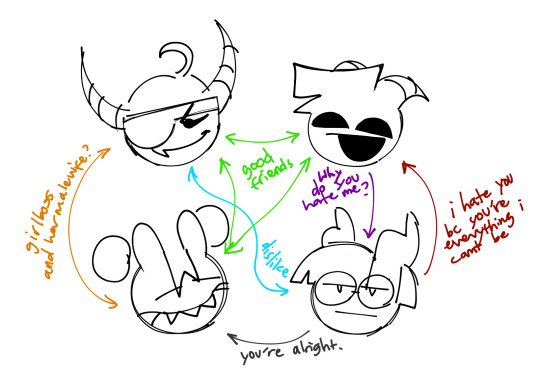
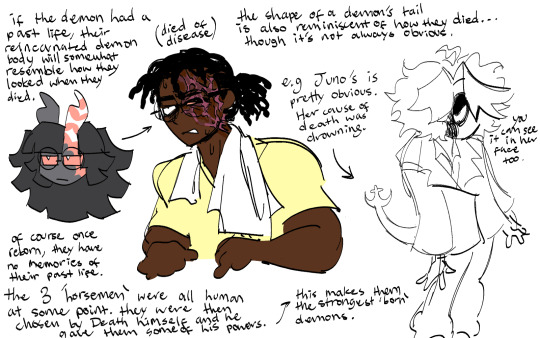
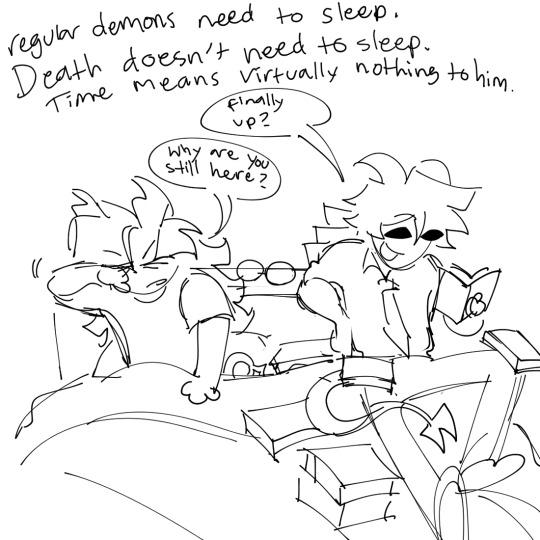
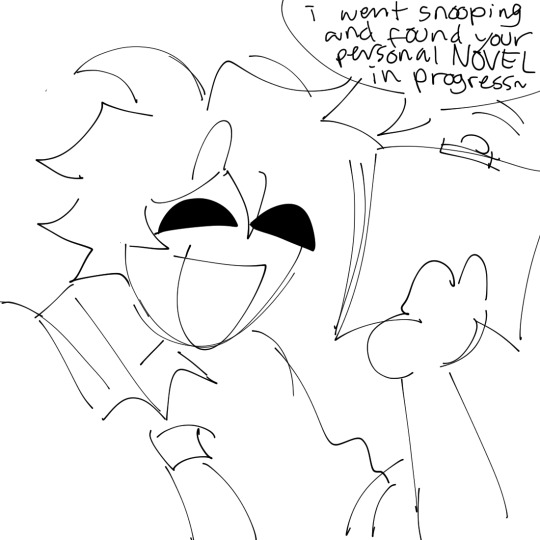




Too lazy to date these individually just know they were from 23rd July 2021 - 18th October 2021, in order of creation.
EARLY TBOD: October 2021 onward
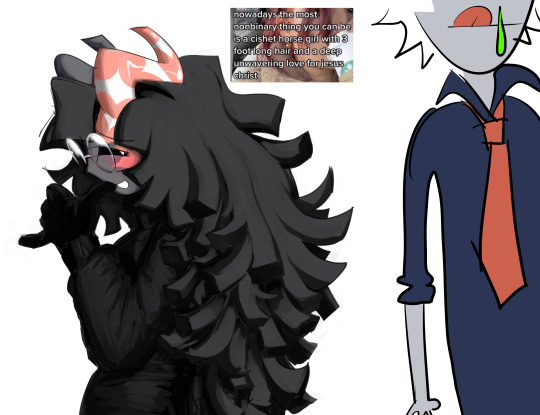
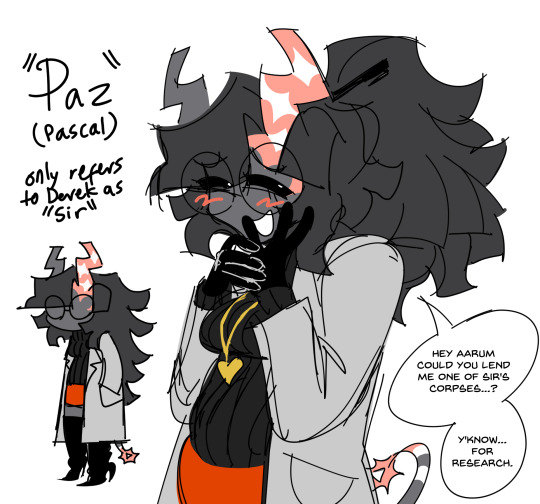

Figure 8. Paz first seen as a girl (23rd February 2022) | Figure 9. New Paz info and first instance of being called "Paz" (18th April 2022) | Figure 10. Paz and Aarum (also 18/4/22)
Around this time was when I ditched the office idea and came up with the idea of Derek (named on 12th September 2021) wanting to have a child with a human. Paz's crush was now a crazy obsession, and also she was in a relationship w Aarum for a while. Canonically, at some point, they broke up some time during Derek's human life. Overall this era in her development was really weird and I'm ashamed of it.
In Figure 9, Paz mentions Derek's "corpses", this is referring to the fact that when Derek first became human he died a lot because he wanted to try different ways of getting hurt and also dying so there were lots of his corpses after he kept dying and coming back. This idea does not carry onto current TBOD because, why, lmao.
There was a plot point where Derek BURIED HER ALIVE for a couple of years (she couldn't die bc she was already dead) because she convinced Aarum to kill Derek earlier than they planned. So weird. This also does not carry onto current TBOD because it's stupid.

Figure 11. The trio celebrating Derek's loss of virginity (18th May 2022)
Quickly all of that weird violence got retconned away and we forgot all about that. Until June 2022 she still had that weird crush that feels like she was cheating on Aarum emotionally. After June, she was a fujo but still dating Aarum, at least the crush wasn't there anymore. I think everything from October 2021 onward is public on derekdemetripoo if you scroll far enough, so I won't include many images.
MODERN TBOD: October 2022 onward
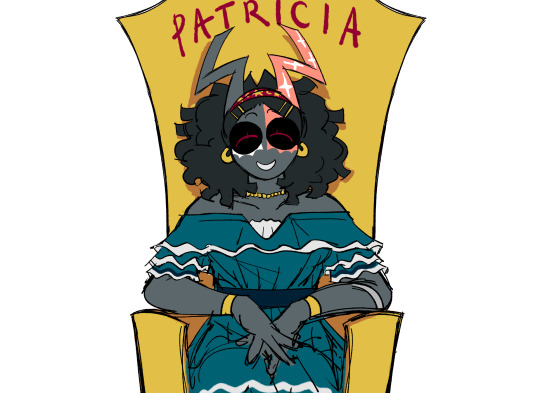
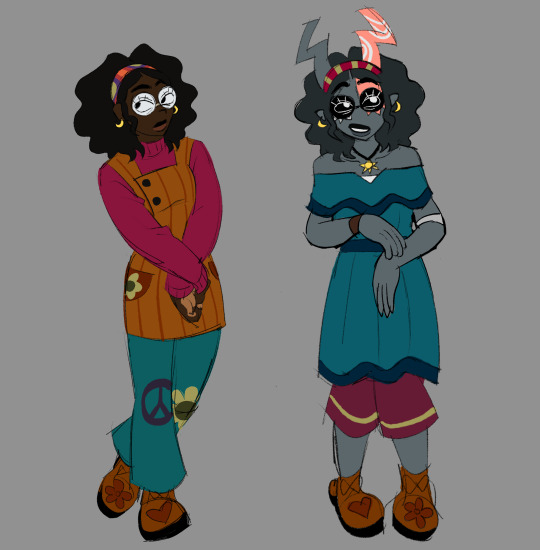
Figure 12. First instance of what would become Paz's new design (23rd October 2022) | Figure 13. Current Paz ref (2nd August 2024)
Figure 12 was never posted because I planned to draw Derek and Aarum there too but got lazy. It was an au where Paz had Derek's role, because at the time I also entertained with an au where Aarum had Derek's role - and from that came Aurele. This drawing was meant to have all 3 of them as gods sitting on chairs. Her chair says Patricia because like Aarum was called Aurele, she needed an au name too. Her dress was inspired by the Haitian Karabela traditional dress iirc because she's Haitian.
I think by now I had gotten rid of the idea of her and Aarum altogether, never dated, just friends. Because Aarum was gay now and Paz was now somewhat romantically/sexually apathetic. Also her and Derek were now more friendly, and she doesn't call him sir anymore. Maybe she did when they first met because he was this weird celestial being, but once they got to know each other she dropped the formalities. Happy ending!
It was always planned that in her past life she was a Haitian volunteer nurse who died by disease in the 1800s. But upon more research she would've had to be a mixed child between a slave and a white man (given the time it was most likely rape) if she had access and freedom to study medicine (albeit informally since women could not go to college). I don't really know how I feel about writing a story like that so I decided to push her death further ahead in time. But yknow if you're gonna write a historical black person there's gonna be slavery/segregation tied to it because the civil rights movement wasn't really that long ago.
At the time of writing this, I still don't know when she died. But I've been entertaining the idea of around the 70s-80s because of the way she dresses. It's probably her old clothes from when she was alive. Maybe it was AIDs. Maybe she accidentally got poked by a non-sterile syringe while volunteering. Who knows. She was 25 when she died and that has been a consistent fact since early TBOD.
Fun fact: I always intended for her to be neurotypical, but I guess things just have a way of happening, she doesn't really give neurotypical anymore. And that's okay. I think it's funny that Derek's only friends aren't normal people either.
I think that's about it for Paz's metahistory! This took a while. A lot of these facts I've just been storing in my head cuz I never made a habit out of writing oc stuff I just remembered it. Which is not a reliable way to store lore.
I've got a couple of requests for other ocs' histories, so I look forward to going down memory lane again. I might even do one on Derek's full metahistory. I tried that once but the max image limit was 10 and also it had stupid commentary. So I might remake it.
Hope you enjoyed reading if you actually read all of this! If you skimmed, this doesn't apply to you. TASER TASER TASER!!!!!!!!!!
11 notes
·
View notes
Note
hello, i hope that you are good and not to bother with this ask! i was wondering about the role of the filmmaker (this artistic career in particular just because cinema is the art form i prefer) in the world we live in today. i remember reading one year ago that xavier dolan had decided to retire because “the world is on fire” and reading today that he’s working on his next movie. i know art can be a protest, a wake up call, a testimony of what happens or even a reminder of everything worthy of notice in the world. but at the end of the day is it just our ego that pushes us to make a movie? don’t we all want to make a tangible difference for the good in the world? i hope i explained myself, and this is in no way an attack, i just wanted to know your opinion since i think we share a sincere love for cinema
bye <3
Hi! It's not a bother at all, I love this. I often find myself thinking about this as well. What is an artist's true motivation behind art? I think we can hear them say many words, but ultimately will never know what is at its very core. Why do we even share art with others? If it's such a solitary and intimate act and experience and we are "doing it for ourselves" why not just make it and never share it? I think social media and capitalism has made these intentions muddied and conversations complex. I think because it seems like everything is about profit that we have become a bit cynical about art and artists. Is art a monologue or a dialogue? Are we truly having a conversation?
When Xavier Dolan made that retirement statement, I understood what he was feeling, making a film does seem insignificant. Millions and millions of dollars are invested in making of a film and it often results in something that isn't very good. I think "times like these" or "world today" to signify bleakness and hopelessness of the world isn't something that really exists. Life and world have always been wrecked with turbulence and tragedy, but you, me, are getting older, more informed, more caring and the more you care the greater the fear, one that you have to fight to not give into.
He said about his new project that “It feels removed from my life and what I know but on re-reading it, I understood that it is a film about the fear of failure, the fear of being rejected, of being misunderstood, the difficulty of creating." He made his first film when he was 19 and he did so much in span of like 10 years, and was lauded as this kid genius, Cannes prizes left and right, but also criticism which is inevitable if you're in the filmmaking business. It comes with the territory and is something you have to accept, but of course it's a difficult thing to be like "yeah, fine, it's great how you just talked shit about my movie." Clearly it took a toll on him and he decided to back out.
If I remember correctly in his retirement statement/interview he was pretty vocal about his filmmaking insecurities, lack of success, is anyone going to see this? will they like it? etc etc which brings up the topic of success and ambition. Being ambitious and wanting to be successful aren't inherently bad things, but we cannot ignore how capitalism is shaping these two, re-defining them, the images of success it evokes.
His statement was also political. Is all art political? I don't know, but I know politics influence many areas of life. Through film we are exposed to so many different experiences and have the opportunity and choice to emphatize. Some of those films carry humanity's greatest tragedies and suffering. I don't think we can draw a clear line between a film and a larger societal change, like drawing a line from A to B to C and so on. It's a drop in the ocean, the wave. We are all part of history, of a specific reality, culture etc. that we can't detach ourselves from. Are there films that are revolutionary and ground-breaking? Of course, but they don't exist in a vacuum.
The question of is it just ego that pushes someone to make a movie is, I think, something that we'll never get an answer to, I doubt anyone will admit to that outloud. And even if they did someone can appear to fiercely and loudly fight you saying "it was never about me."
Why do you make the things you make? I feel like very few people go into a creative endeavour with a clear motivation. There are some noble and profound intentions, but a thread of irrationality is always present.
I think this is always an interesting topic, but ultimately one without a clear answer. It's something that we can dissect to the point of absurdity. It's a conversation that we should have, that is fun to have, but also "meaningless". From the beginning of time we can tell humans love stories and we can philosophize and analyze all we want, but, if I can be sentimental, I am just so glad we have soooo much art out there and I am so glad humans decided to invent movies and I hope we never stop making them!
Feel free to share more of your thoughts!
12 notes
·
View notes
Text


Film Of an age. Eté 1999. Un danseur de salon serbe vit une romance inattendue et intense de 24 heures avec le frère aîné d'une amie.
Un film rare, une image, une réalisation, un scénario parfaits. Un mélange entre Wong Kar-Wai (Happy together) et les meilleurs films de Xavier Dolan. La qualité des dialogues est impressionnante, comme le jeu des acteurs qui les portent. L'histoire d'un coup de foudre comme il en arrive rarement dans la vie des hommes... et au cinéma. Bouleversant ! A découvrir assurément. Je recommande fortement. 💙👍
9 notes
·
View notes
Text
Too Much Sauce
I just had a chance to dig into Harry's unreleased song - leaked in early January 2024 - Too Much Sauce. Hadn't listened properly utnil today. My first impression, nice nod to G. Harrison's, While My Guitar Gently Weeps.
youtube
But this is not a happy song. It smacks hard of industry abuse and the image that Harry's been subjected to play since the beginning of his career.
Sample lyrics: "Be what they want you to be." "I'm a simple boy, but I'm a good time Sally." "I'm a good time, make you feel all right." "Chewed it up and spat it out." "Now there's too much sauce, got to keep my fingers clean."
IHeart Radio (Jan. 16) and Anthony Pham (on Jan. 17) both alluded to the leaked song on their respective Instagrams. Not sure if allusions from were intentional but if not, it's a weird coincidence.


and by the way, if you haven't listened to While My Guitar Gently Weeps, there's a reason why Too Much Sauce references it.

What does it all mean? No idea. There's speculation it might be alluding to industry abuse because, coincidentally, today (1/17/24) is also day Irving Azoff is in court answering to alleged Sexual Assault and Trafficking Claims against his associates.
Sexual Assault and Trafficking Claims Against James Dolan, Harvey Weinstein, and Azoff Companies | Wigdor LLP (wigdorlaw.com)
Someone smarter than me can probably make better connections, but I think it's at least interesting to consider given Harry has been represented by Azoff's son's company for almost a decade.
/end
#harry styles#too much sauce#lyric analysis#not really#industry abuse allegation#what did they do to you Harry#Youtube
20 notes
·
View notes
Text
(4) Dan McDermott, Kim Kelleher, Jeffrey Dean Morgan, Lauren Cohan, Kim Granito and Kristin Dolan attend AMC Networks' 2024 Upfront at Chelsea Factory on April 10, 2024 in New York City (Footage by New Vision/Getty Images)
10 notes
·
View notes
Text
45 New & Forthcoming Indie Press Books by BIPOC Authors
Every month Book Club for Masochists: A Readers’ Advisory Podcasts chooses a genre at random and we read and discuss books from that genre. We also put together book lists for each episode/genre that feature works by BIPOC (Black, Indigenous, & People of Colour) authors. All of the lists can be found here.
Fiction
Weird Black Girls: Stories by Elwin Cotman (AK Press)
False Idols: A Reluctant King Novel by K’Wan (Akashic Books)
Sister Deborah by Scholastique Mukasonga, translated by Mark Polizzotti (Archipelago Books)
Bad Land by Corinna Chong (Arsenal Pulp Press)
These Letters End in Tears by Musih Tedji Xaviere (Catapult)
The Coin by Yasmin Zaher (Catapult)
Cecilia by K-Ming Chang (Coffee House Press)
Fog & Car by Eugene Lim (Coffee House Press)
We’re Safe When We’re Alone by Nghiem Tran (Coffee House Press)
A Woman of Pleasure by Kiyoko Murata, translated by Juliet Winters Carpenter (Counterpoint Press)
Bad Seed by Gabriel Carle, translated by Heather Houde (Feminist Press)
The Default World by Naomi Kanakia (Feminist Press)
The Singularity by Balsam Karam, translated by Saskia Vogel (Feminist Press)
I'll Give You a Reason by Annell López (Feminist Press)
Tongueless by Lau Yee-Wa, translated by Jennifer Feeley (Feminist Press)
Outcaste by Sheila James (Goose Lane Editions)
Silken Gazelles by Jokha Alharthi, translated by Marilyn Booth (House of Anansi Press)
Dad, I Miss You by Nadia Sammurtok, illustrated by Simji Park (Inhabit Media)
Secrets of the Snakestone by Pia DasGupta (Nosy Crow)
The Burrow by Melanie Cheng (Tin House)
Masquerade by Mike Fu (Tin House)
The World With Its Mouth Open: Stories by Zahid Rafiq (Tin House)
I Love You So Much It's Killing Us Both by Mariah Stovall (Soft Skull Press)
Non-Fiction
RAPilates: Body and Mind Conditioning in the Digital Age by Chuck D and Kathy Lopez (Akashic Books)
All Our Ordinary Stories: A Multigenerational Family Odyssey by Teresa Wong (Arsenal Pulp Press)
Dispersals: On Plants, Borders, and Belonging by Jessica J. Lee (Catapult)
My Pisces Heart: A Black Immigrant's Search for Home Across Four Continents by Jennifer Neal (Catapult)
Beyond the Mountains: An Immigrant's Inspiring Journey of Healing and Learning to Dance with the Universe by Deja Vu Prem (Catapult)
Out of the Sierra: A Story of Rarámuri Resistance by Victoria Blanco (Coffee House Press)
Thunder Song: Essays by Sasha LaPointe (Counterpoint Press)
Born to Walk: My Journey of Trials and Resilience by Alpha Nkuranga (Goose Lane Editions)
Jinny Yu (At Once/À La Fois) by Jinny Yu (Goose Lane Editions)
Log Off: Why Posting and Politics (Almost) Never Mix by Katherine Cross (LittlePuss Press)
Becoming Little Shell: A Landless Indian’s Journey Home by Chris La Tray (Milkweed Editions)
World of Wonders: In Praise of Fireflies, Whale Sharks, and Other Astonishments by Aimee Nezhukumatathil (Milkweed Editions)
Opacities: On Writing and the Writing Life by Sofia Samatar (Soft Skull Press)
The Story Game by Shze-Hui Tjoa (Tin House)
Black Meme: The History of the Images That Make Us by Legacy Russell (Verso Books)
Poetry
i heard a crow before i was born by Jules Delorme (Goose Lane Editions)
We the Gathered Heat: Asian American and Pacific Islander Poetry, Performance, and Spoken Word edited by Franny Choi, Bao Phi, Noʻu Revilla, and Terisa Siagatonu (Haymarket Books)
A Map of My Want by Faylita Hicks (Haymarket Books)
[...] by Fady Joudah (Milkweed Editions)
Comics
A Witch’s Guide to Burning by Aminder Dhaliwal (Drawn & Quarterly)
Oba Electroplating Factory by Yoshiharu Tsuge (Drawn & Quarterly)
Lost at Windy River by Jillian Dolan, Trina Rathgeber and Alina Pete (Orca Books)
8 notes
·
View notes
Text
hiya! so this is a long one:
during december, i ran a daily puzzle recommendation column in a music discord server where i sent one cool puzzle every day for 31 days. those puzzles drew from basically every corner of puzzling that i've been sinking into for the past couple of years, so i'm going to dump them all in this singular tumblr post as a quick way to jot down where i've already been. maybe you'll enjoy one of them also!
logic puzzles
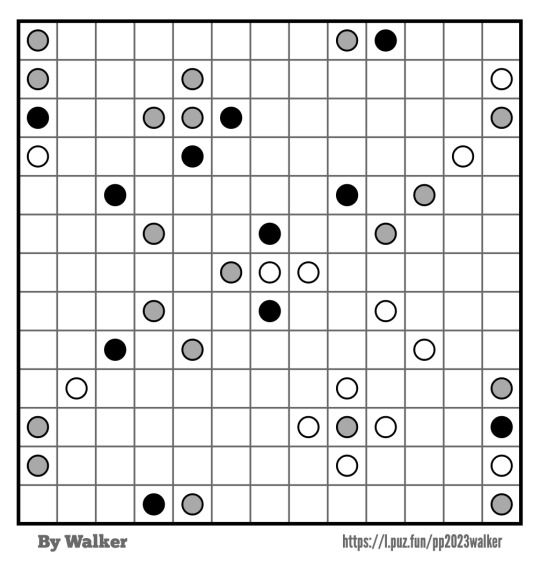
1. nonbinary masyu, designed by walker for the 2023 puzzler pride edition of the griddle. link goes to the pdf of the whole puzzle pack, where this puzzle and its rules can be found on page 5.

2. recursive masyu, designed by fleb, with a super unique variety mechanic. link contains the rules. (fleb had a stellar youtube channel going in the past with really well made breakdown videos of various puzzles. all of it is worth watching)

3. rush hour sudoku, designed by chameleon, which adds an interactive mechanic to a sudoku. link contains the rules and a playable solver that they coded themselves

4. the miracle sudoku, designed by mitchell lee, which at this point is incredibly famous. link contains the rules and a playable solver.

5. foggy twilight kurotto, designed by menderbug. good if you've done a twilight kurotto, or a normal kurotto, before. link contains the rules and a playable solver via penpa+.
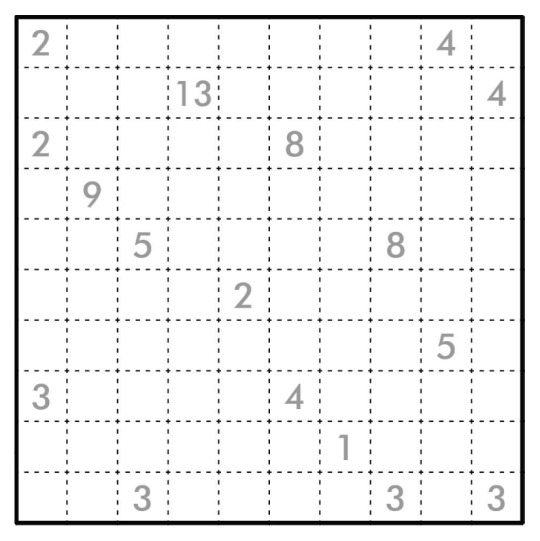
6. choco banana, designed by tawan sunathvanichkul for the 79th issue of tambox bulletin. link goes to the pdf for the whole puzzle page, where this puzzle is on the left side.
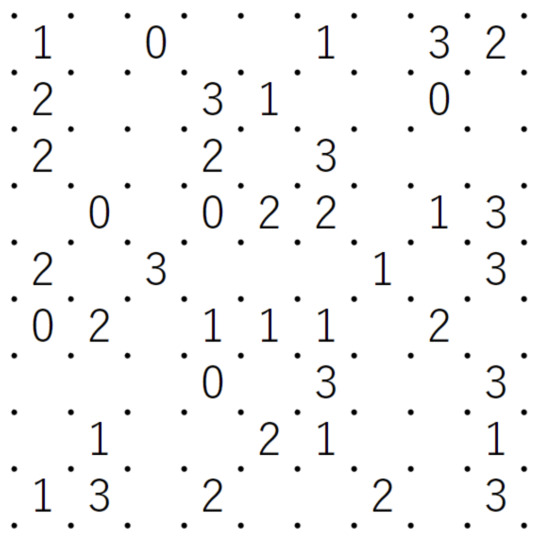
7. litherslink, designed by michael3.14 for the snakes on a plane series in the cracking the cryptic discord server. i've played slitherlink before, and this messed with my head. link goes to a puzz.link solver with the rules in Help -> Rules.

8. star battle, designed by jack lance (rest in peace). oh, is there no link for it? that's weird.
word puzzles
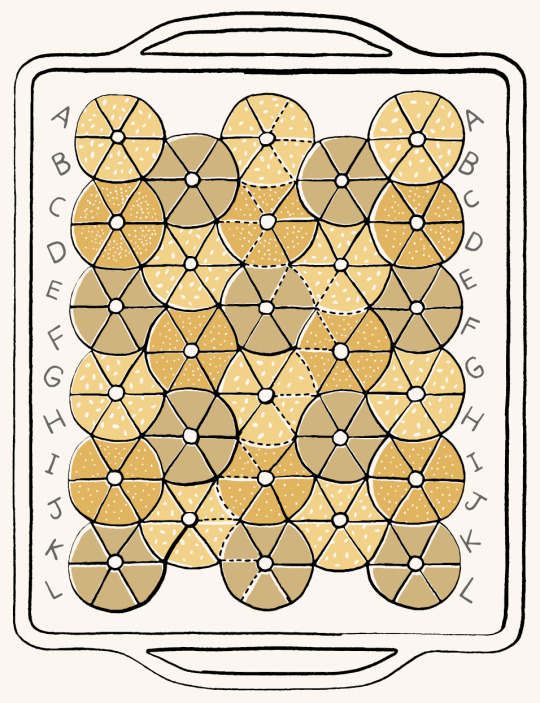
9. bagel shop caption puzzle, a rows garden published by the new yorker. link contains a solver with the clues.

10. printer's devilry, a crossword by kyle dolan with printer's devilry clues. link goes to a solver on amuselabs with the clues and an explanation of how to solve them.
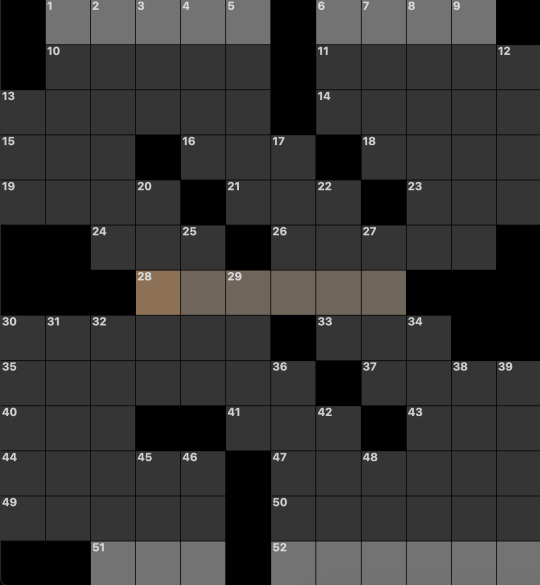
11. safe cracking, a crossword by noneuclidean with an unorthodox theme. link goes to a solver on crosshare with the clues.

12. japanese braille, a sample puzzle from the international linguistics olympiad. link goes to a pdf containing all of the sample puzzles, where this puzzle is on page 4. note that the pdf version of the puzzle (as opposed to the above image) contains extra information that makes the puzzle easier.
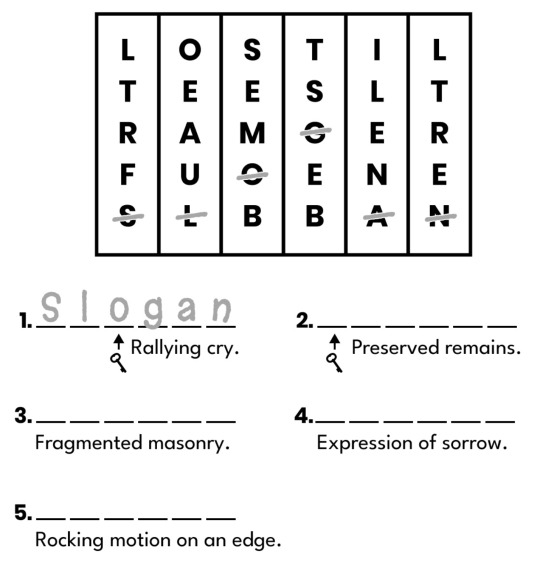
13. the 2023 puzzmo holiday puzzlebook, published by puzzmo. link goes to a pdf containing the above puzzle and so many more. if you like what's inside and you're not already playing puzzmo, now is a great time to hop aboard!
hunt puzzles

14. paint by numbers, designed by brian chen for the 2023 galactic puzzle hunt. link includes an answer checker.

15. extreme anagrams, designed by yannick yao for the 2022 galactic puzzle hunt. the above image is a curated selection from the puzzle that i found the most interesting. link goes to the full puzzle.

16. make your own math quiz, designed by azalea weisblat and josh alman for the 2020 galactic puzzle hunt, which was one of my favorite solving experiences of all time. link goes to the full puzzle, which is interactive.

17. worm search, part of a puzzle designed by adeline wong and thomas gordon for the 17th shard puzzle hunt. note that knowing which puzzle from the hunt contains this subpuzzle is a small spoiler, so if you're sure you want to see the full puzzle, it's here.
games

18. 0123456789, an instructionless puzzle game designed by matrix67 that defies explanation. link goes to itch.io

19. the blot thickens, a puzzle designed by scottg for the 2023 confounding calendar. i previously wrote about it here! link goes to itch.io

20. a level set from INSIGHT (or "Insight"? or "IN?IGHT"? or "IN⸮IGHT"? the name isn't stylized consistently), a game designed by maou. this game is instructionless - your goal is to split each shape into two pieces following some rule. the rule for this level set can be inferred from only the image, but the game expects you to toy around with possibilities to figure out why certain solutions are right and others are wrong. the link goes to the full game on steam, where if you'd like to try that, you can buy it and reach this stage yourself.

21. klifur, a bouldering simulator designed by torfi that's so like and so unlike real climbing. link goes to itch.io
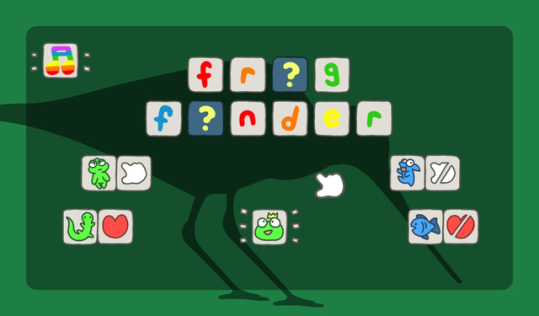
22. frog finder, a cute game designed by poobslag. it got updated with more content since i originally played it! link goes to itch.io
tiny tricksies

23. make oo, a puzzle designed by beekie. link goes to itch.io
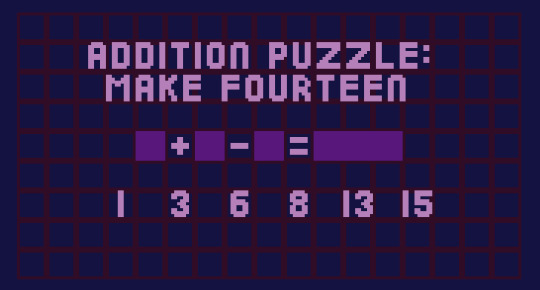
24. addition puzzle, designed by beekie for the 2021 confounding calendar. link goes to itch.io

25. snow walk, a gif-based puzzle designed by patrick traynor (the maker of patrick's parabox) for the 2021 confounding calendar. link goes to itch.io

26. ペンギン迷路 (penguin maze), a japanese puzzle designed by qrostar. you don't need to know japanese to solve it - the goal is to place one right arrow (->) in an empty space in the grid such that starting from the marked arrow in the top right and moving in the direction of each arrow you pass eventually leads you to the flag in the bottom. link goes to the full puzzle on their twitter ("""X""")
variety

27. an unusual chess puzzle, originally designed by raymond sullivan in "the chess mysteries of the arabian knights", sourced from this blog post on chess.com. this is not a conventional chess puzzle - the goal is to figure out how this position happened. ie: it's currently someone's turn, and you have to figure out what the board looked like 3 moves ago.
28. five houses puzzle, designed by jack lance. i've embellished the problem statement to make the goal more clear:
there are five houses on a street that all have different prices and heights.
let's say the prices are $1M, $2M, $3M, $4M, and $5M, and the heights are 3m, 3.5m, 4m, 4.5m, and 5m, in some order.
given the following constraints, identify the price and height of each house:
1) The house that's taller than the house that's more expensive than the house that's shorter than the house that's cheaper than the house that's blue is red.
(i came across this from a blog post by jacob cohen of puzzles for progress discussing jack lance's passing. worth a read honestly - jack lance was too good)

29. the cursed dice riddle, designed by dan finkel and presented by ted-ed. link goes to the video, which contains the problem statement and the solution.
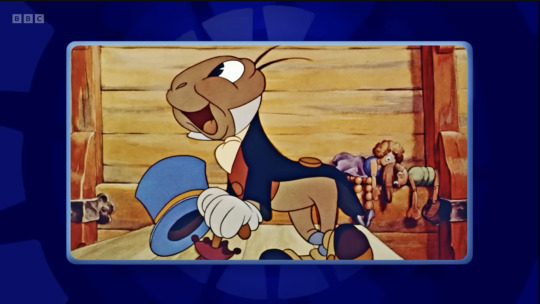
30. round 2 of s19e6 of the british quiz show only connect, reformatted as a puzzle. this is honestly worth its own blog post, which i'll make later - for now, you can find the full episode here.

31. last but by far not least, LOK, a very artful puzzle book designed by blaz urban gracer of letibus design. link goes to itch.io
i had a great time fishing up all of these during december, and i'm hoping to find even cooler stuff this year and beyond. send me cool stuff if you've got anything!
13 notes
·
View notes
Text
Long COVID fatigue tied to brain connectivity patterns, study finds - Published Sept 22, 2024
by Eric W. Dolan
A new study published in Psychiatry Research explores the relationship between fatigue in Long COVID and specific patterns of brain connectivity. Researchers observed that fatigue, one of the most common and debilitating symptoms in Long COVID patients, is associated with certain patterns of brain structure and function, particularly in the frontal and cerebellar regions. Notably, mental and physical fatigue were linked to distinct brain connectivity patterns, suggesting the possibility that different neural mechanisms may be involved in each type of fatigue.
Long COVID, also known as post-COVID syndrome, affects individuals who continue to experience symptoms months after recovering from the initial COVID-19 infection. Fatigue is one of the most common and disabling symptoms of Long COVID, affecting an estimated 35% to 60% of patients. Fatigue in these patients can be physical, cognitive, or both, severely impacting their ability to work and quality of life.
While fatigue has been widely studied in conditions like chronic fatigue syndrome and multiple sclerosis, much less is known about its neurological basis in Long COVID. Researchers wanted to investigate whether fatigue in these patients is related to specific patterns of brain connectivity, and how these patterns might differ between mental and physical fatigue. Understanding the brain’s role in fatigue could help guide treatments and improve patient outcomes.
“Among symptoms in Long COVID, fatigue is one of the most frequent and most disabling, and is usually persistent. Fatigue has been proven to have an impact on the patient’s quality of life and working status. We aimed to investigate the neural basis of fatigue in order to better understand the pathology and improve our knowledge to help design better treatments,” said study authors Maria Diez-Cirarda and Jordi Matias-Guiu of the Neurological Diseases Research group at Hospital Clinico San Carlos in Madrid.
For their study, the researchers recruited 129 individuals who had tested positive for COVID-19 at least three months prior. Participants were screened to exclude those with other neurological or psychiatric disorders that might interfere with the results. The average time since their initial COVID-19 infection was about 14 months, and most of the participants were women.
Each participant completed a detailed clinical and neuropsychological assessment. Fatigue levels were measured using the Modified Fatigue Impact Scale (MFIS), which assesses both cognitive (mental) and physical fatigue. Participants also completed a Stroop test, a well-known measure of cognitive control, to assess mental fatigue more objectively.
In addition to the psychological tests, participants underwent MRI scans to assess brain structure and functional connectivity. The scans included resting-state fMRI to measure functional connectivity and diffusion-weighted imaging to examine the integrity of white matter in the brain. The researchers were particularly interested in whether patterns of brain activity and white matter integrity were linked to the levels of fatigue reported by the participants.
The results of the study revealed that 86% of the participants reported significant levels of fatigue, with both mental and physical fatigue being prominent. Importantly, the researchers found that mental fatigue showed a different pattern of brain connectivity than physical fatigue.
Functional connectivity analysis revealed that both types of fatigue were associated with activity in the frontal areas of the brain. Physical fatigue was linked to increased connectivity between the cerebellum and the temporal lobe, while mental fatigue showed reduced connectivity between frontal regions and the cerebellum, as well as other areas of the brain, such as the insula and anterior cingulate cortex.
The study also looked at the integrity of white matter, the part of the brain that helps different regions communicate with each other. Both mental and physical fatigue were associated with changes in white matter diffusivity—specifically in areas like the forceps minor, the anterior corona radiata, and the cingulum. These findings suggest that differences in white matter integrity may be related to both physical and mental fatigue in Long COVID.
Interestingly, the study also found that subjective cognitive complaints, such as memory and attention problems, were closely linked to both physical and mental fatigue. However, these complaints were more strongly associated with physical fatigue than with objective measures of cognitive function, such as performance on the Stroop test. This discrepancy highlights the complex relationship between fatigue and cognitive symptoms in Long COVID patients.
“The present results revealed that fatigue in Long COVID is associated with structural and functional connectivity mostly in frontal areas but also temporal, and cerebellar areas,” the researchers told PsyPost. “These findings are relevant because they demonstrate that in patients with Long-COVID, brain dysfunction contributes to fatigue. In addition, these findings could help in the design of specific interventions, and pave the way to the use of non-invasive brain stimulation techniques to alleviate both physical and mental fatigue in these patients.”
“The results also highlight the relationship between fatigue and subjective cognitive complaints. These findings point out the relevance of the multidisciplinary assessment of patients with Long COVID with subjective cognitive complaints, in order to unravel the symptomatology beneath the patient’s complaints.”
The study provides new insights into the neural mechanisms related to fatigue in Long COVID, but there are some limitations to consider. The study used a cross-sectional design, meaning it only captured a snapshot of the participants’ brain activity and fatigue levels at one point in time. Longitudinal studies that follow patients over time are needed to determine whether these brain changes are permanent or temporary.
“We have performed a comprehensive assessment of these patients and published several papers on the topic regarding the cognitive and clinical symptoms in Long COVID and its cerebral correlates and biomarkers associations,” Diez-Cirarda and Matias-Guiu said. “Our next step is to assess these patients longitudinally in order to evaluate how these changes evolve over time. Longitudinal results will help in the characterization of the physiopathology of the disease.”
“Moreover, we are interested in the design of specific treatments to improve cognitive and fatigue symptoms in these patients using neuromodulation and cognitive training. We already published one study regarding the efficacy of neuromodulation over fatigue in Long COVID.”
The study, “Neural basis of fatigue in post-COVID syndrome and relationships with cognitive complaints and cognition,” was authored by Maria Diez-Cirarda, Miguel Yus-Fuertes, Carmen Polidura, Lidia Gil-Martinez, Cristina Delgado-Alonso, Alfonso Delgado-Álvarez, Natividad Gomez-Ruiz, Maria José Gil-Moreno, Manuela Jorquera, Silvia Oliver-Mas, Ulises Gómez-Pinedo, Jorge Matias-Guiu, Juan Arrazola, and Jordi A Matias-Guiu. www.sciencedirect.com/science/article/pii/S0165178124003986
#mask up#covid#pandemic#covid 19#wear a mask#public health#coronavirus#sars cov 2#still coviding#wear a respirator#long covid#covid conscious#covid is not over
10 notes
·
View notes
Text
the Starlight Express Alumni Podcast is fascinating because you have
-multiple stories of people accidentally falling into roles that suit them perfectly, in very different ways
-Reva Rice basically never got hurt and one of the only times she did was OFF SKATES when she fell down the stairs
-Dolan Jose REALLY wanting to cover the “girl components” and being SO excited to at least be Wrench
-the mental image of a 6’6 Vegas Showgirl looking guy as a couples therapist
-the perpetual challenge of casting Poppas lol this constantly comes up in different Stex interviews
#eric clausell seems like a really nice guy but it’s just REALLY funny imagining him in mundane settings#honestly i find the production history and stories behind stex more interesting than a lot of the actual canon#there is so much fascinating depth behind how the skating physics impact characters#makes me really want to get back to the rink and maybe look into classes so i can just understand that aspect of them better#stuff like “‘cars’ have to hold on VERY tight because some of the ‘engines’ will just blast off”#the poppas usually needed the most warnings/guidance for cars because some of them did unusual things#because he’s SO hard to cast they’d just work with what they could get skating ability wise a lot of the time#lon satton only braked on one side and needed to be pushed up hills/didn’t control himself well going down#it’s also funny how mykal is constantly haunting them because they’ll namedrop him constantly and assume you know who he is#but barely say anything about him and he never actually appears#i want to use that as a story element somewhere because it’s mysterious and amusing#just make mysterious comments about how great Joe Schmoe is and never elaborate assuming you know who he is already
3 notes
·
View notes
Text






Timothy M. Dolan Archbishop of New York
Cardinal Dolan back from his vacation, all rested and ready for me to lust over. I just can't stop thinking about him… and jerking off to him.
On A Side Note: Why do I feel all embarrass seeing Cardinal Dolan going sleeveless now. I guess its the priest showing some skin thing.

Also, why am I imaging him playing with my tits looking at this pic.

#timothy dolan#timothy m. dolan#priest#cardinal#husky daddy#handsome daddy#daddy#celebrities#cilf#archbishop#religious figures#eye glasses#clergy#sitting
29 notes
·
View notes